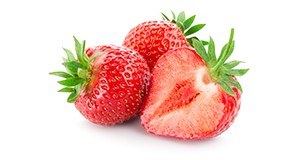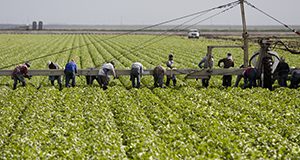Lightning is a common occurrence in Florida. Although lightning kills only about 10% of the people it strikes, it can cause physical and mental complications that victims must face for the rest of their lives. Agriculture workers need to have a good working knowledge of lightning, its effects, and ways to protect others and themselves from this potentially life-threatening hazard. This new 4-page document discusses types of lightning, outdoor safety for farm workers, lightning medical aid, and regulations for employers. Written by Shawn Steed and Alicia Whidden, and published by the UF/IFAS Department of Agricultural and Biological Engineering, October 2018.
http://edis.ifas.ufl.edu/ae526
Tag: Alicia Whidden
The Migration Pattern of Florida Seasonal Farmworkers
This 4-page fact sheet written by Zhengfei Guan, Berdikul Qushim, Feng Wu, and Alicia Whidden and published by the UF/IFAS Food and Resource Economics Department investigates the migration pattern of seasonal farmworkers based on a survey of strawberry harvesters conducted in 2016. In the survey, we asked workers where they were working and what crops they were working on before their current jobs. We also asked where they would migrate and what crops they would be working on after the strawberry harvest. We found that most workers were from Florida, Michigan, North Carolina, and California in that order, and that similar percentages of workers would migrate to these states after the job. Blueberries, tomatoes, and apples were the top three crops they were working on before and after their current jobs.
http://edis.ifas.ufl.edu/fe1040
Florida Strawberry Production Costs and Trends
To help growers and policy makers understand how and why strawberry production costs have changed over time, this 5-page fact sheet written by Zhengfei Guan, Feng Wu, and Alicia Whidden and published by the UF/IFAS Food and Resource Economics Department presents cost information collected over a five-year period, analysis of the cost structure of Florida strawberries, and an examination of the trend of changing costs along with the factors underlying the trend.
http://edis.ifas.ufl.edu/fe1013
Top Challenges Facing the Florida Strawberry Industry: Insights from a Comprehensive Industry Survey

Florida is the largest supplier of winter strawberries in the United States and the second largest overall after California. The farm-gate value of Florida strawberries is approximately US$400 million and the total economic contribution of the industry is estimated at about US$1 billion. Even so, over the last few years, the Florida strawberry industry has faced many challenges. In 2012, Florida production was down by 20% compared to the previous year. The record level of imports of strawberries from Mexico deeply depressed the market, causing a market crash at the peak season of the Florida production. Decreased revenues coupled with increased production costs have caused significant losses to the Florida industry. In this three-page article, Zhengfei Guan, Feng Wu, and Alicia Whidden investigate Florida growers’ perceptions of various threats and challenges and discuss those threats that should be dealt with as high priority. Published by the UF Food and Resource Economics Department.
edis.ifas.ufl.edu/fe972
An Overview of the US and Mexico Strawberry Industries

The statistics of the Food and Agriculture Organization of the United Nations indicate that world production of strawberries has exceeded 4 million metric tons since 2007. With a total production of 1.4 million tons (3 billion pounds) in 2012, the United States is the largest producer among countries where statistical data are available, accounting for about 30% of the world supply. Production in Mexico increased from 140 thousand tons to 360 thousand tons, making Mexico the second-largest strawberry producer in the world. This four-page fact sheet written by Feng Wu, Zhengfei Guan, and Alicia Whidden and published by the UF Food and Resource Economics Department provides an overview of the US and Mexican strawberry industries, paying special attention to the trade relations between the two countries. (Photo credit: anna1311/istock/Thinkstock)
edis.ifas.ufl.edu/fe971


